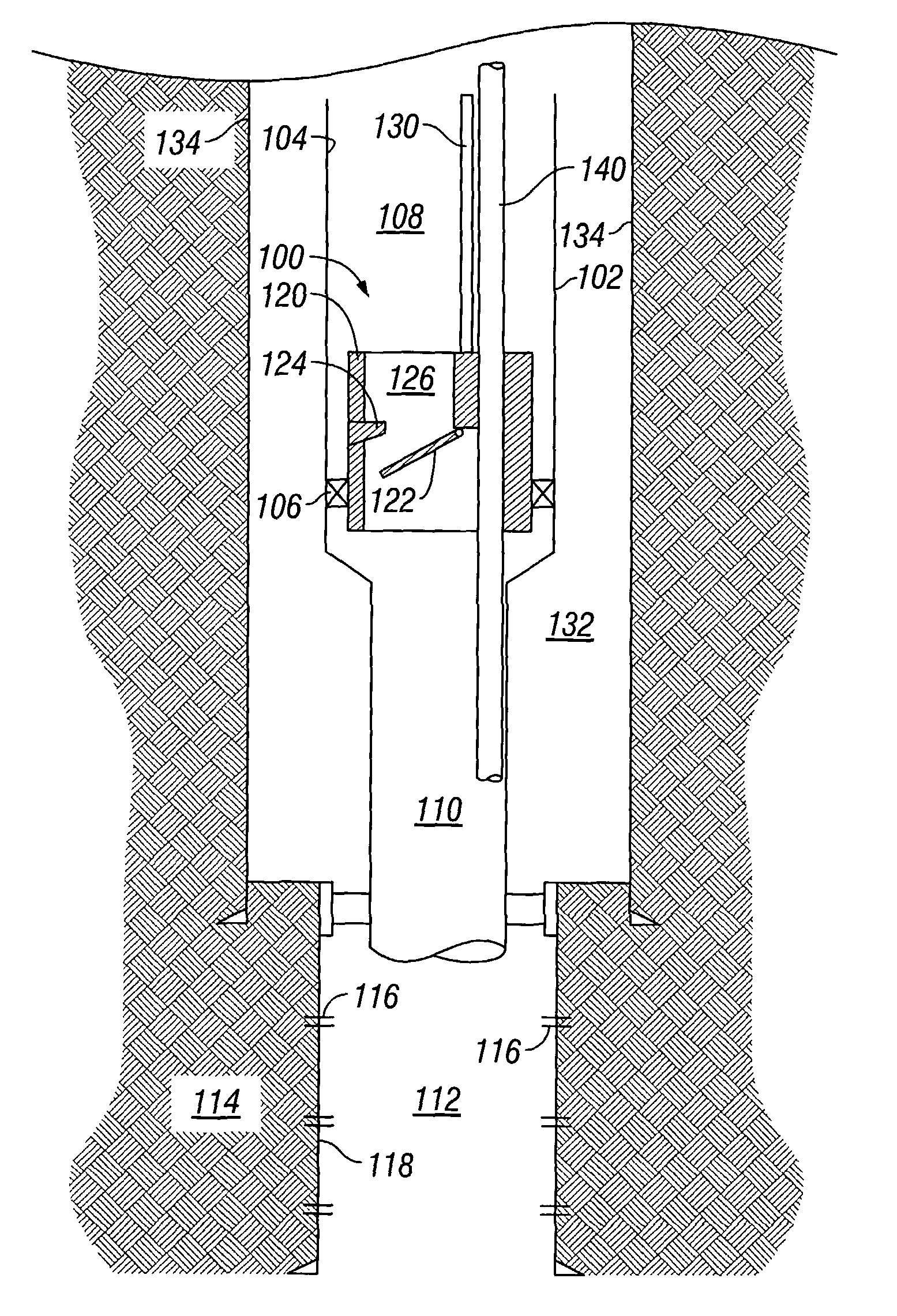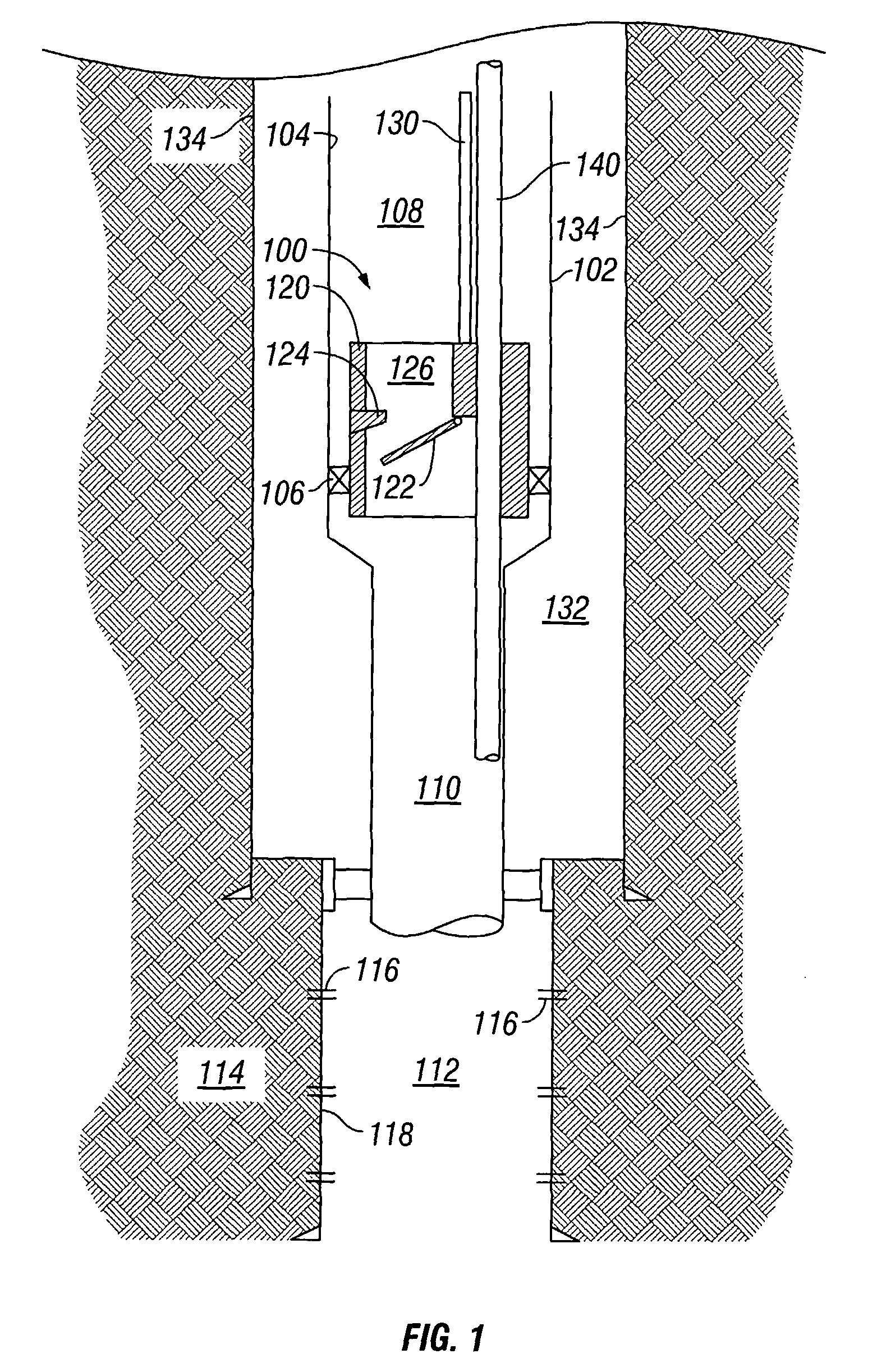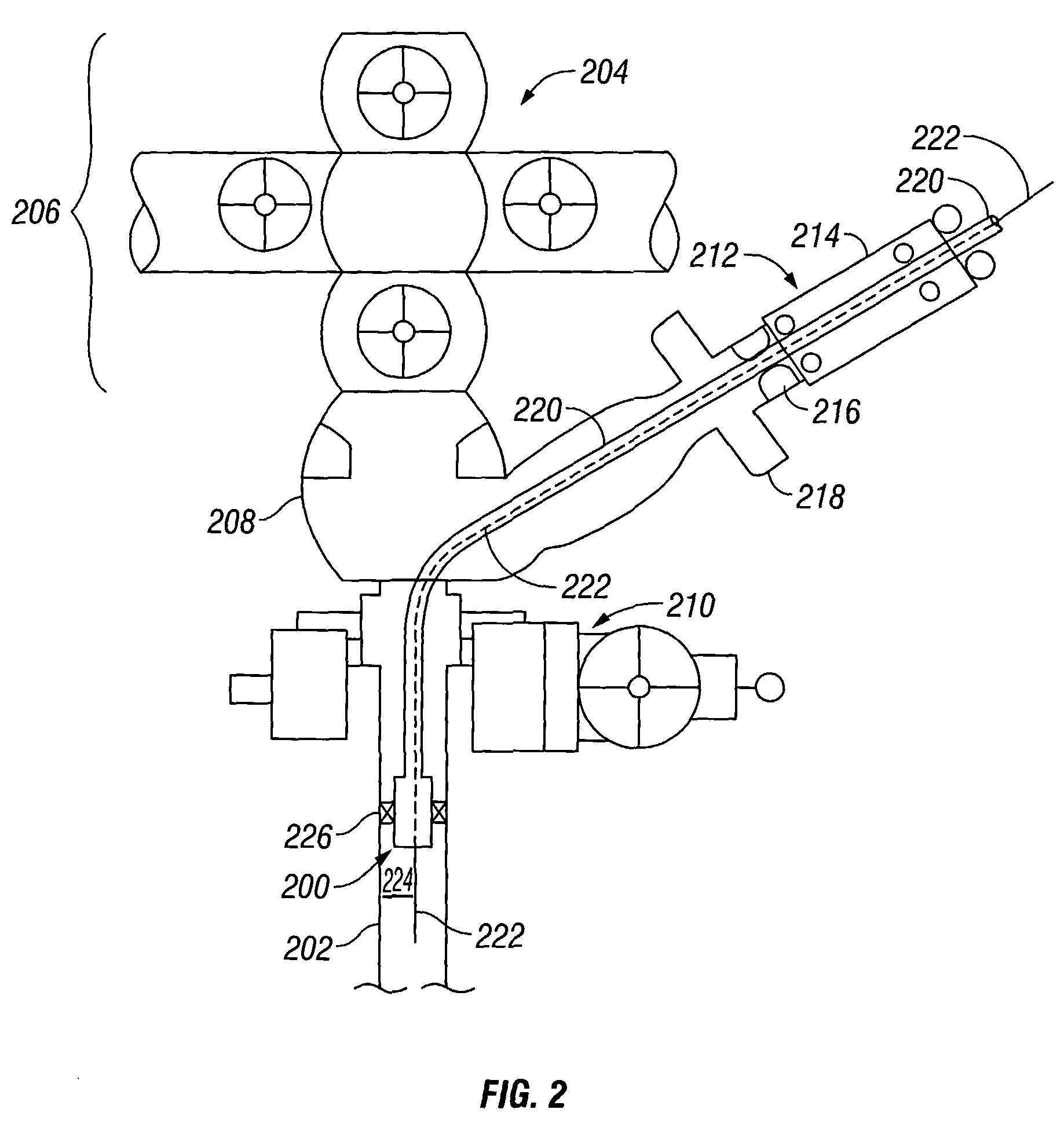Downhole safety valve apparatus and method
a safety valve and downhole technology, applied in the direction of wellbore/well accessories, fluid removal, sealing/packing, etc., can solve the problems of invasive installation after production tubing placement in the wellbore, high cost and time-consuming, and catastrophic blowout of production and other fluids into the atmospher
- Summary
- Abstract
- Description
- Claims
- Application Information
AI Technical Summary
Benefits of technology
Problems solved by technology
Method used
Image
Examples
Embodiment Construction
[0024]Referring initially to FIG. 1, a safety valve assembly 100 is shown schematically deployed in a string of production tubing 102. Safety valve assembly 100 can be of any valve type known to one of ordinary skill in the art and may be deployed integrally within tubing string 102 or may be held within a bore 104 of tubing 102 and isolated with a hydraulic seal 106. Nevertheless, the safety valve assembly 100 functions to selectively isolate a first zone 108 of tubing 102 from a second zone 110 of tubing 102. Typically, zone 108 is in communication with a surface location (not shown) at the uppermost end of tubing 102 and zone 110 is in communication with one or more production zones 112. To communicate production fluids from the subsurface formation 114 to the surface, production fluids flow through perforations 116 in a production casing or wellbore 118, up through lower zone 110 of production tubing 102, past safety valve 100, through upper zone 108 of tubing 102 and to the sur...
PUM
 Login to View More
Login to View More Abstract
Description
Claims
Application Information
 Login to View More
Login to View More - R&D
- Intellectual Property
- Life Sciences
- Materials
- Tech Scout
- Unparalleled Data Quality
- Higher Quality Content
- 60% Fewer Hallucinations
Browse by: Latest US Patents, China's latest patents, Technical Efficacy Thesaurus, Application Domain, Technology Topic, Popular Technical Reports.
© 2025 PatSnap. All rights reserved.Legal|Privacy policy|Modern Slavery Act Transparency Statement|Sitemap|About US| Contact US: help@patsnap.com



